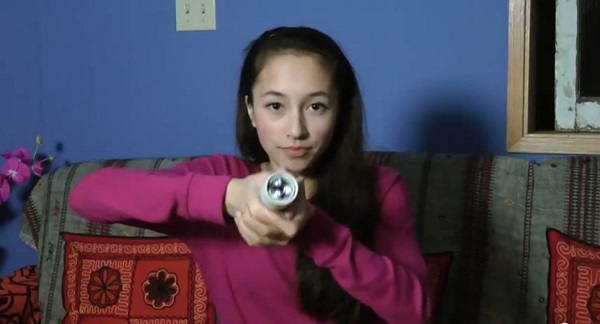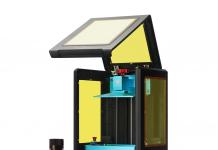Not all of us get to invent things at such an early age, but luckily, from time to time prodigies appear among us. Read on to see how this thermoelectric flashlight was made.
Trying to change the principle flashlights work might look to some like reinventing the wheel. However, this is not that useless, as finding new sources of energy for powering flashlights is an ongoing activity for scientists, old and young. Ann Makosinski, a 15-year old Canadian from Victoria, British Columbia figured that humans generate quite a lot of heat that’s not put to use in any way, so why not power a flashlight with it? The design won Ann a place in the 15 Google Science Fair finalists. The winner will go home with a $50,000 scholarship, and considering that building the following flashlight only cost her $26, getting the grand prize would mean an investment return that even the greatest businessmen in the world would envy.

Ann used a Peltier tile to generate the necessary electricity, as that is exactly what that component does when heated on one side and cooled on the other. The material used for the body of the flashlight needed to be a good heat conductor, so aluminum was picked because of its physical characteristics, but also because of its small price. The design of the flashlight makes total sense, as the hollow body permits the ambient air to cool the inside, while the palm generates sufficient heat to make the Peltier tile work.
Now don’t imagine that this tenth-grader got things right from the first try. In terms of wattage, it seems that our body radiates 5mW of heat per square cm. To power an LED, about a tenth of that is necessary, so this condition was met. Check out the following video to learn more details about how this flashlight was made.
Obviously, most of the comments on the above video are hilarious. The majority were triggered by Ann saying that humans are a great source of untapped thermal energy. That particular phrase caused some to say that The Matrix is becoming a reality, as we’d first be used as torches as then as energy sources for the machines. Another YouTuber claimed that harvesting a few millions of humans would probably provide enough energy to power an LED TV. Needless to say, there are many YouTube users who have expressed their admiration for this 15-year old. I wish her good luck, as she’ll need it for winning Google Science Fair.
If you liked this post, please check the Doctor Who Dalek flashlight keychain and the Icon high-powered LED flashlight.










